10 Best Exercises for Seniors

Lessons in Mindfulness Ten Best Exercises for Seniors to Do Daily
What are we thinking about today? We have been researching the various exercises commonly determined great for strength building and asked the question “Which would be the most beneficial for the senior population?” With my background in Physiology of Exercise and consultations with physical therapists over the years, we have determined ten exercises that are the most beneficial for seniors to do on a daily basis.
We observed the movements to perform daily physical tasks and evaluated the muscles required to successfully complete each motion. The list of activities we determined everyone performs on a daily basis are: sitting up from a lying position, getting up from a sitting position, moving from a standing to a sitting position, standing, sitting, climbing up and down stairs, walking forward, changing directions, turning, and lying down. For each of these tasks there are several muscle groups involved such as abdominal, thighs, hamstrings, latissimus dorsi, shoulder muscles, to name a few. In normal life some muscle groups tend to weaken and make daily tasks more difficult as the muscles being used continue to strengthen.
When the opposing set of muscles weaken from not being used, you begin to feel pain and stiffness which indicate your body is out of balance. We thought it might be beneficial to evaluate the muscles that may need strengthening to bring our body back into a more harmonizing stasis and develop a routine that can be performed daily.
Following are the exercises that can be performed daily to provide a stronger more balanced body.
Seated stretch with support: Sit on a chair with a small ball, yoga block or foam deep tissue roller placed between your shoulder blades and the back of the chair. Lean back putting pressure against the ball, arms bent at 90 degrees with hands up and open elbows out with head back. Hold for 10 counts, relax and repeat 6 to 9 times. This exercise opens the chest while flexing the Latissimus dorsi muscle and the teres major muscle. This muscle belongs to the muscles of the scapular motion producing movements on the shoulder joint, and is an accessory respiratory muscle and acts as one of the main stabilizers of the spine during various movements.
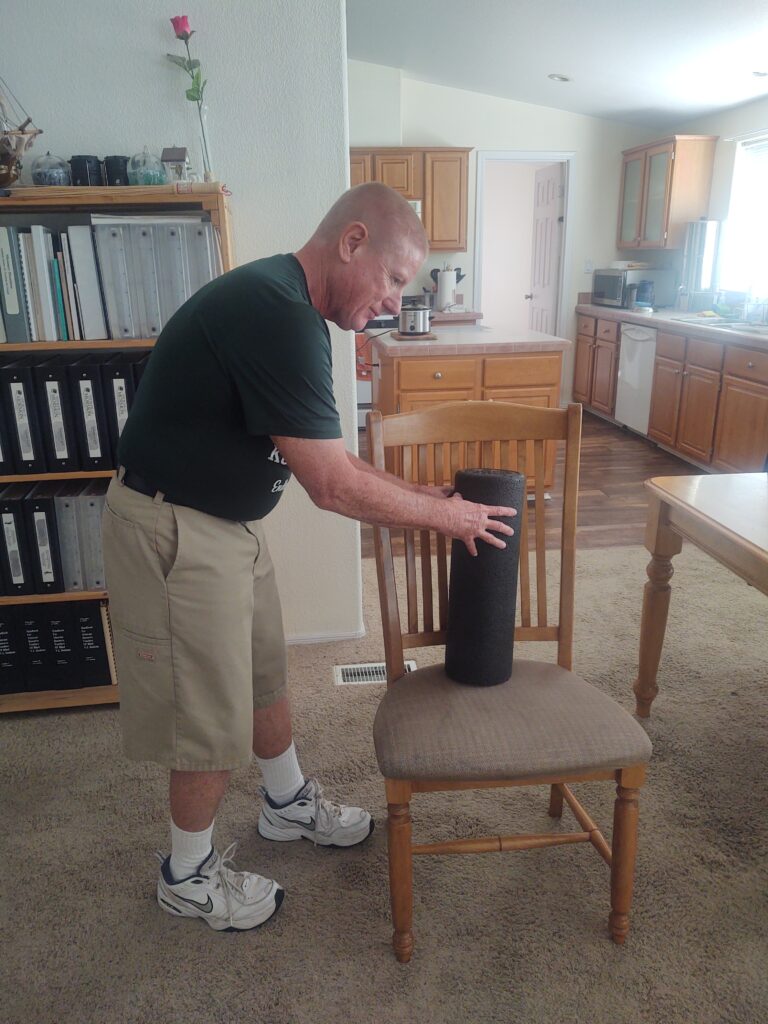
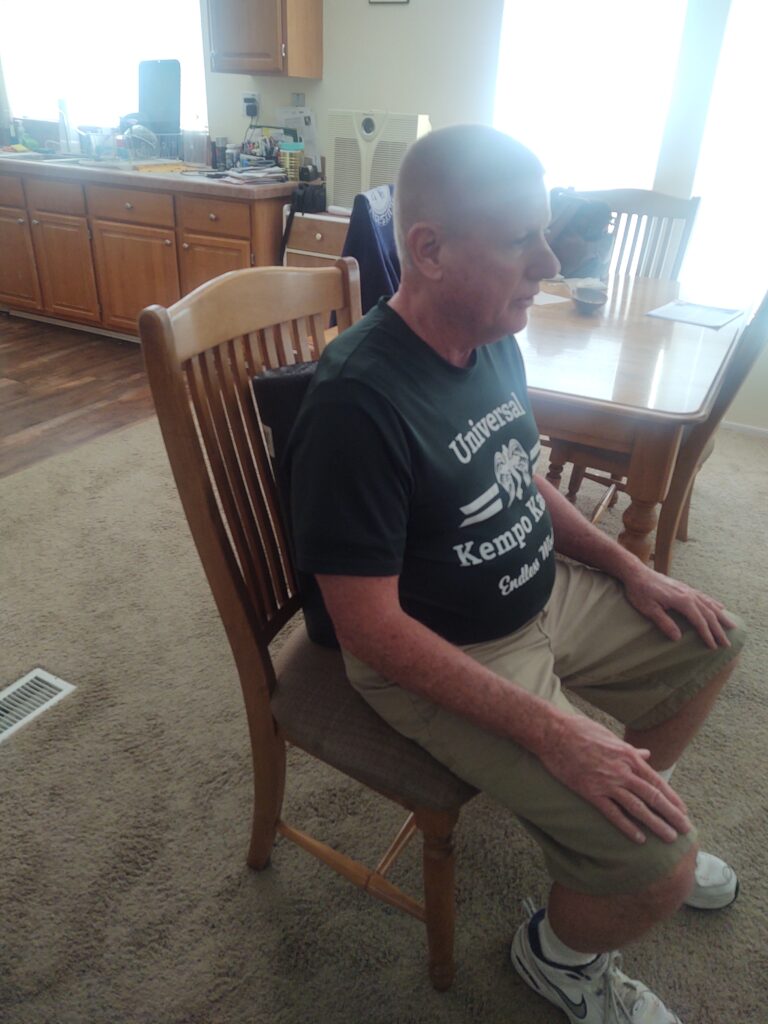
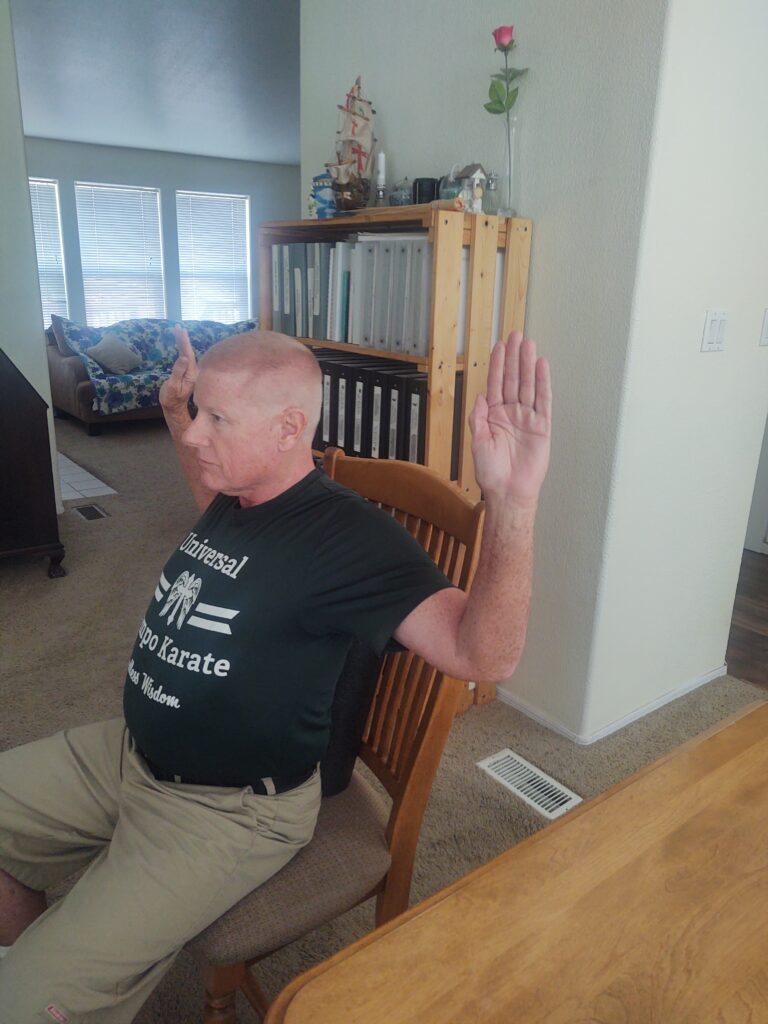
Butterfly Stretch: While sitting on the chair, interlock fingers behind the neck then open elbows out with head back. Hold 10 counts then relax and repeat 6 to 9 times. This exercise seems similar to the seated stretch in number 1, however it focuses on the deltoid, humerus, and trapezius muscles. This group of muscles act on the shoulder joint and the vertebral column.

Wall Angels: Stand with your back against the wall. Make sure your head, buttocks, shoulders, head and hands all keep contact with the wall as your hands move out and up over your head then back down to your side while keeping your arms straight. Repeat 6 to 9 times. The muscles being worked are the erectus muscles. This exercise will help improve you range of motion while helping you stand straight and erect.
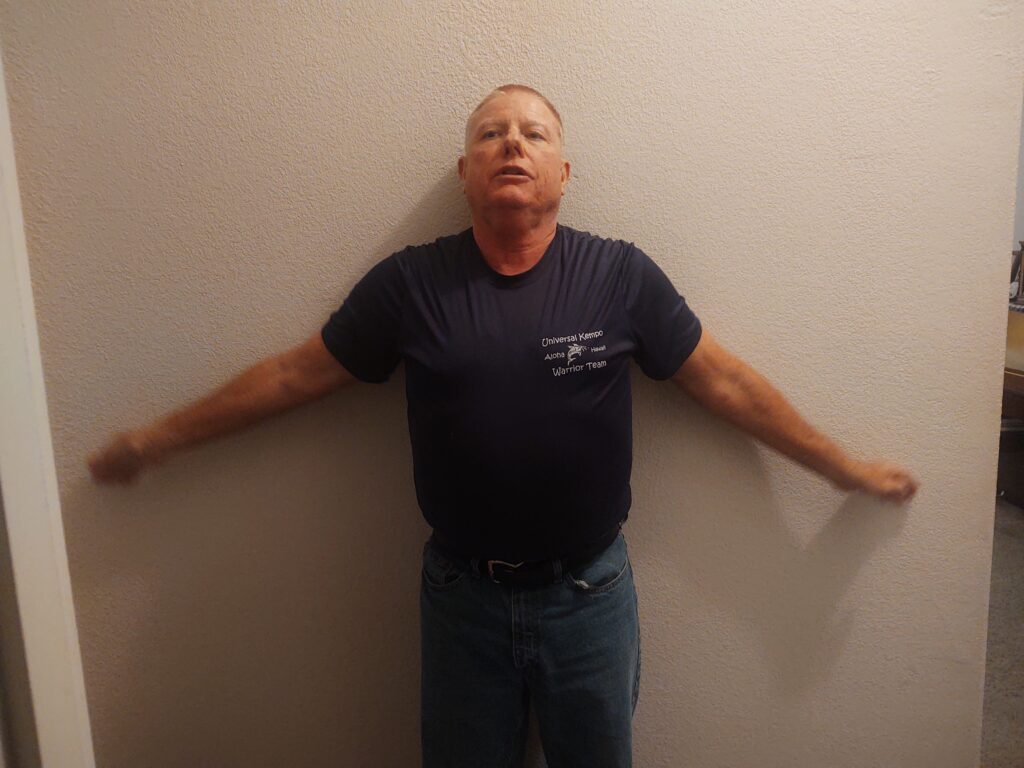
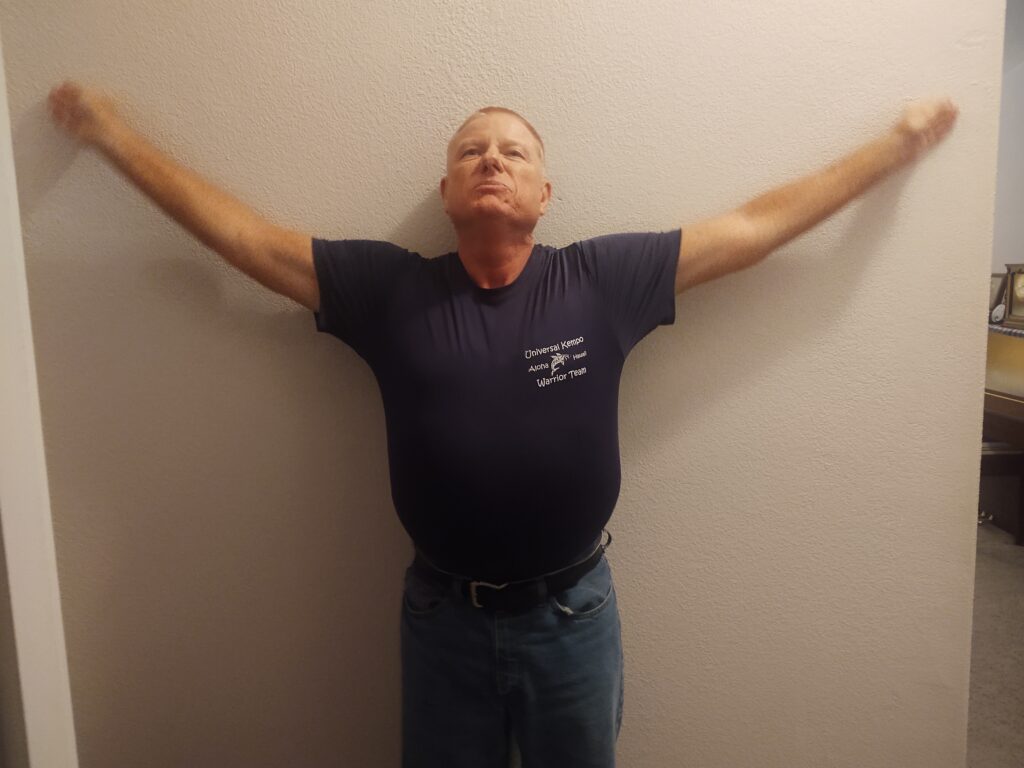
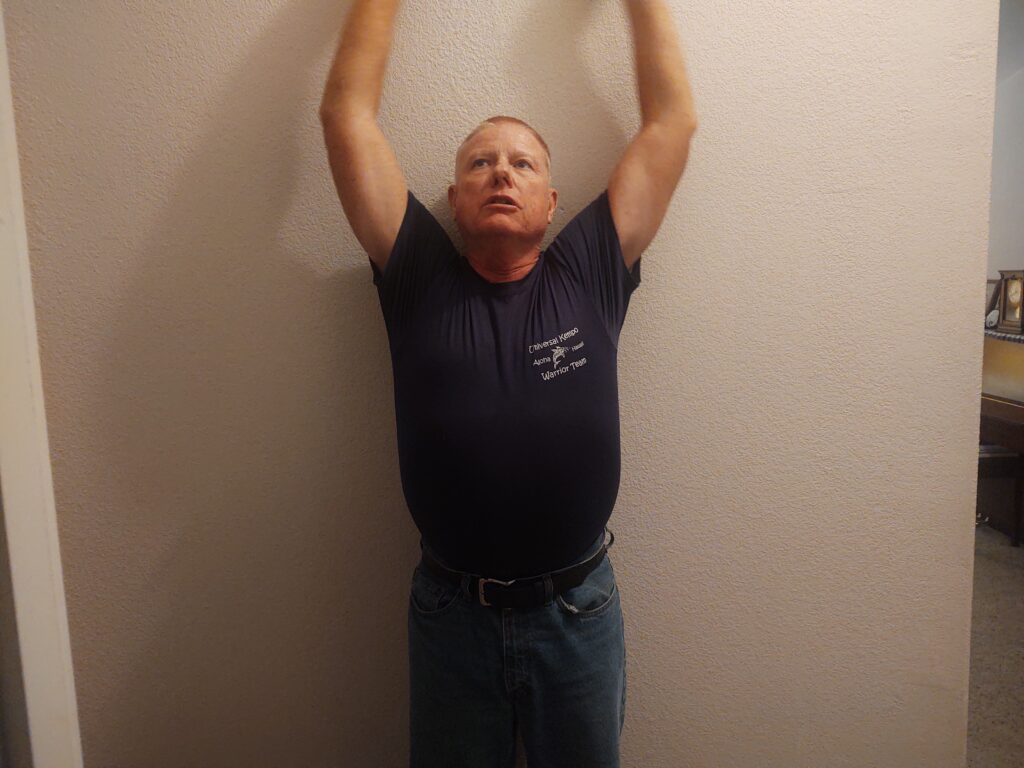
Squats: You can use your chair to help you as you squat. With feet apart and hands in front, lower your buttocks like sitting in a chair while keeping your head, shoulders, hips and feet in a good alignment. Then return to your beginning position. Repeat 6 to 9 times. A straight pole, staff or walking stick can be used to help maintain your body’s alignment. Make sure your head, back and buttocks stay in contact with the pole. The muscles being used are in your upper legs, abdomen, and buttocks. These muscles help you as you sit and stand as well as walking up and down stairs and getting in and out of a car.
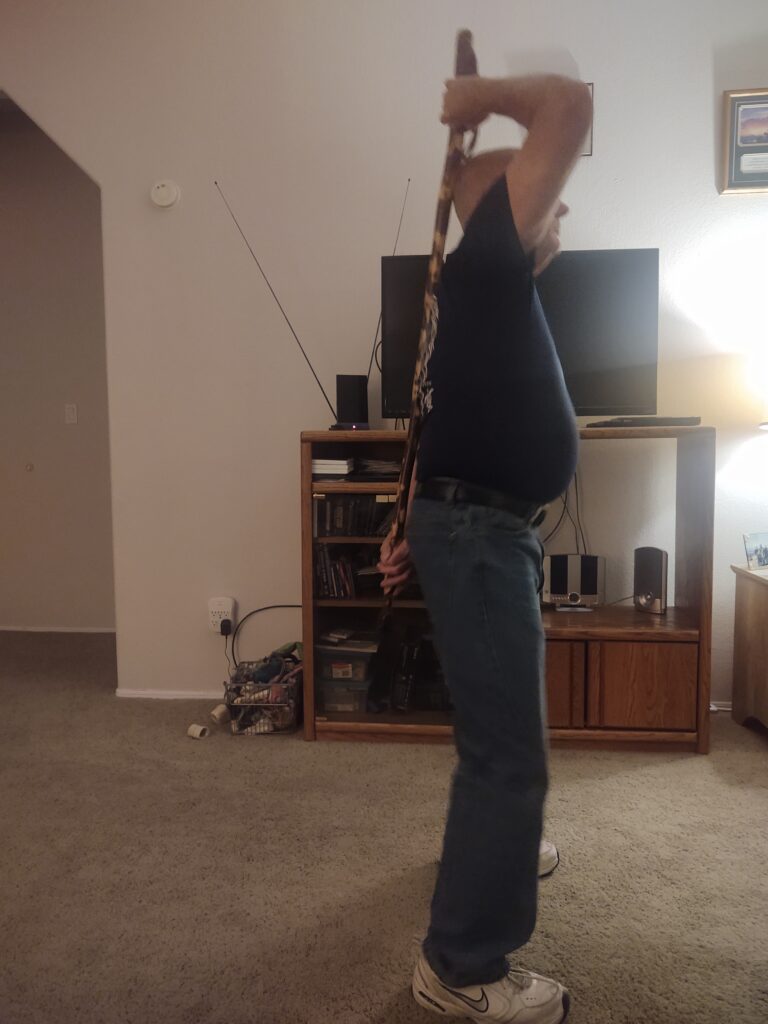
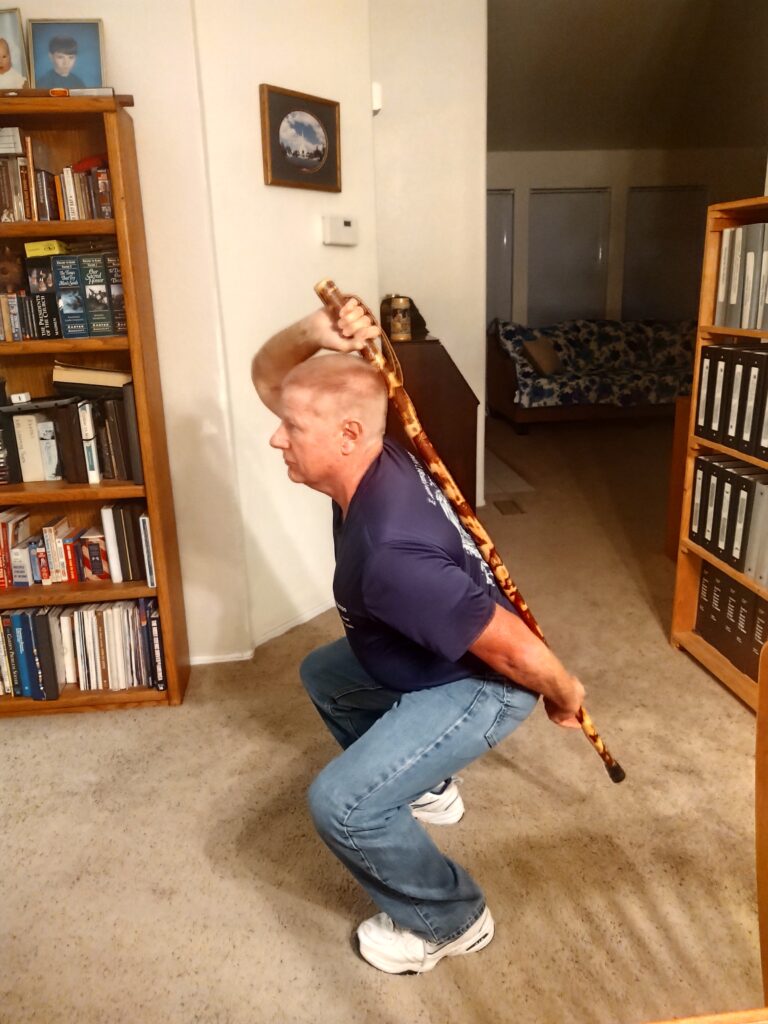
Lateral Movement: While keeping your body erect, perform side steps. First one side then the other. This exercise equalizes strength on both legs and strengthens our quadriceps, hamstrings, low back and gluteal muscles which improves inner thigh flexibility, challenges balance, and uses ankle, knee and hip joints.
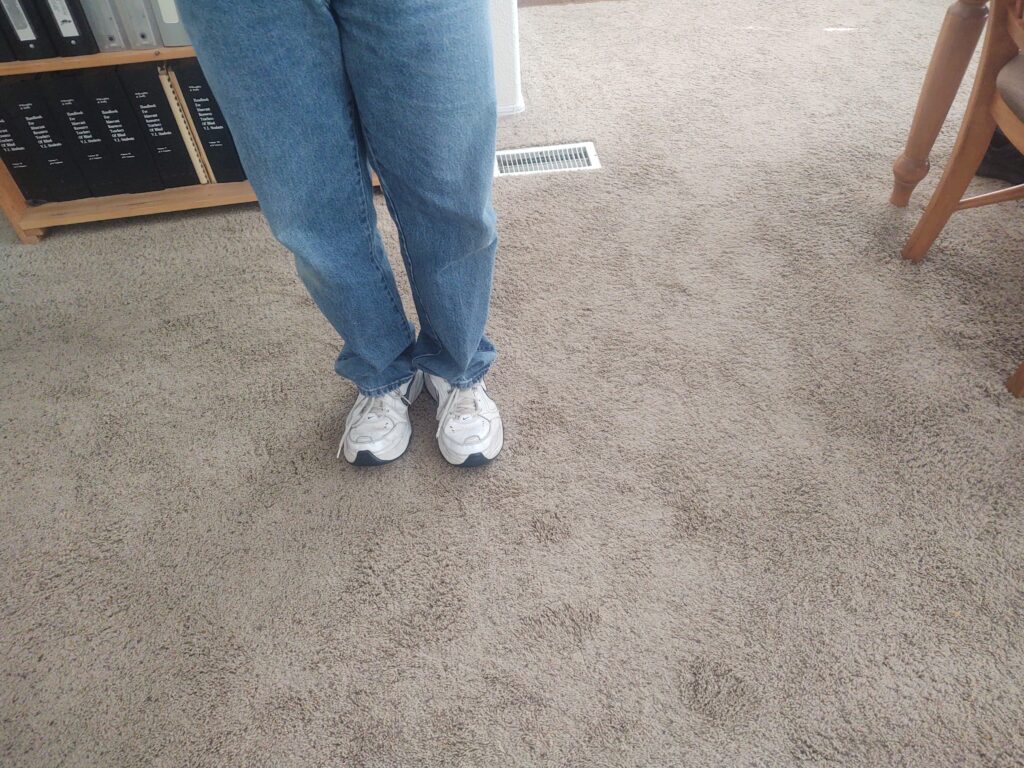


Heel and Toe Raises: Stand erect with feet together and hands resting comfortably at your side. Raise your toes off the floor then rock forward to raise your heels off the floor. Repeat 6 to 9 times. This exercise works the muscles on the lower front and lower back of the leg. This helps to strengthen and stabilize the ankle.
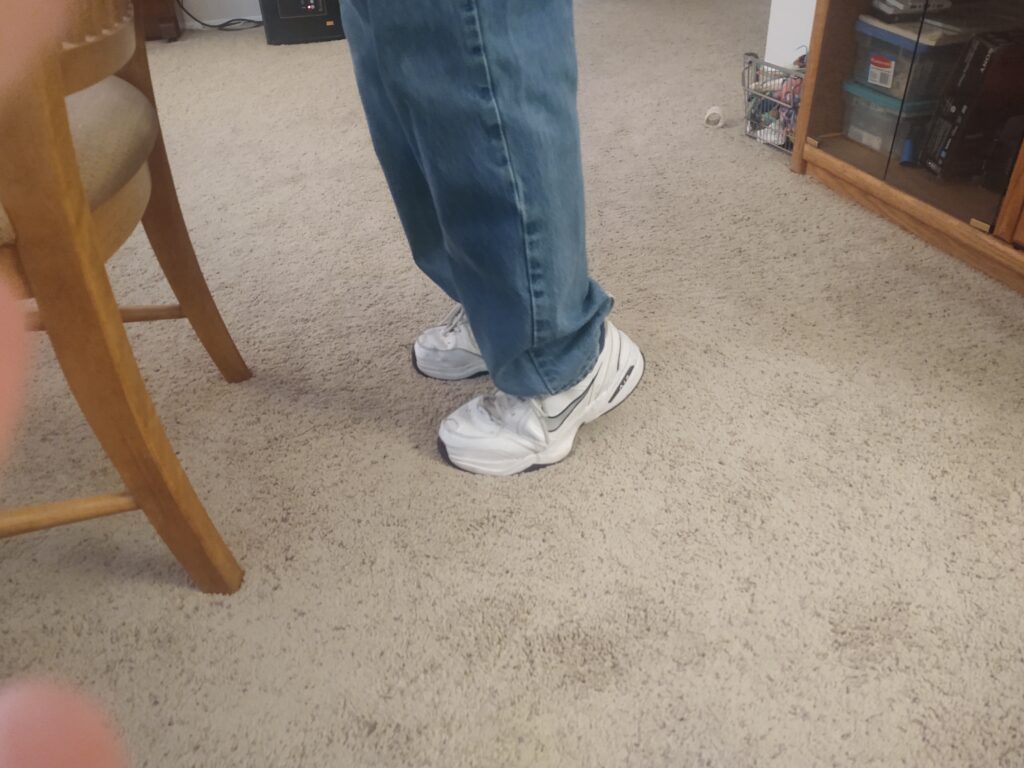
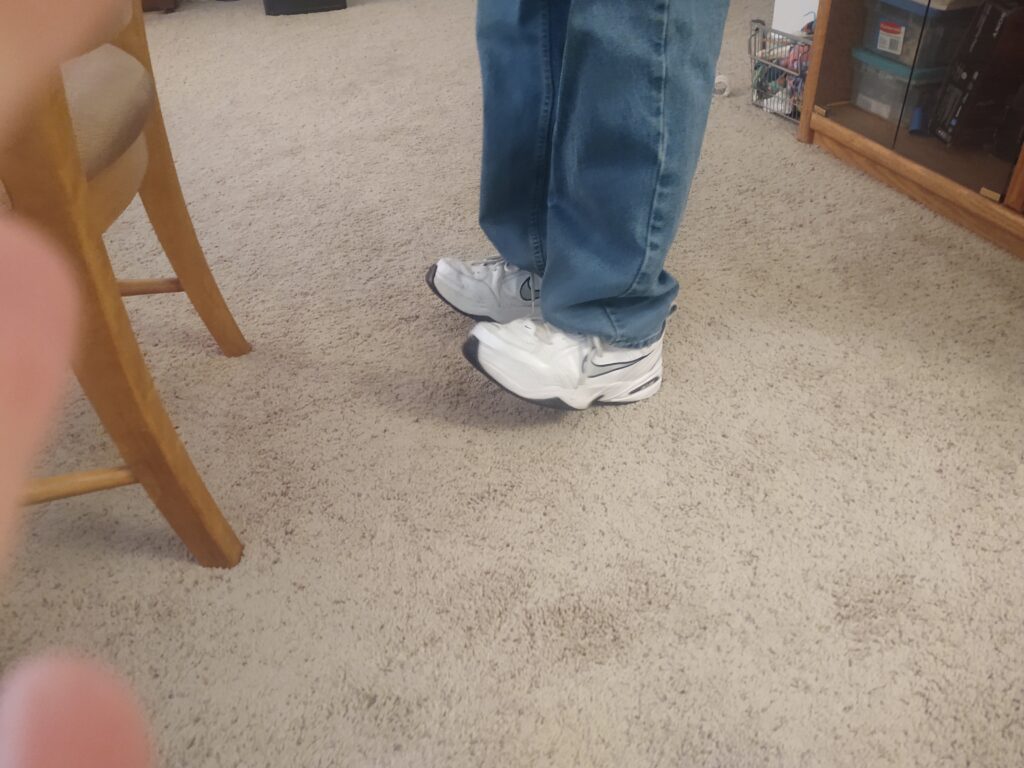
Pushups: You can perform wall pushups, chair pushups, knee pushups, or full body pushups. Your choice. Whichever you choose the process is the same. Hand flat on the surface directly under your shoulders. Tighten your stomach muscles and your buttocks muscles to help keep your body straight while lowering your chest toward the wall, chair, or floor and back up. Keep elbows close to your body throughout the execution of each pushup. Repeat 6 to 9 times. This exercise strengthens every muscle throughout the body and assists with proper body alignment.

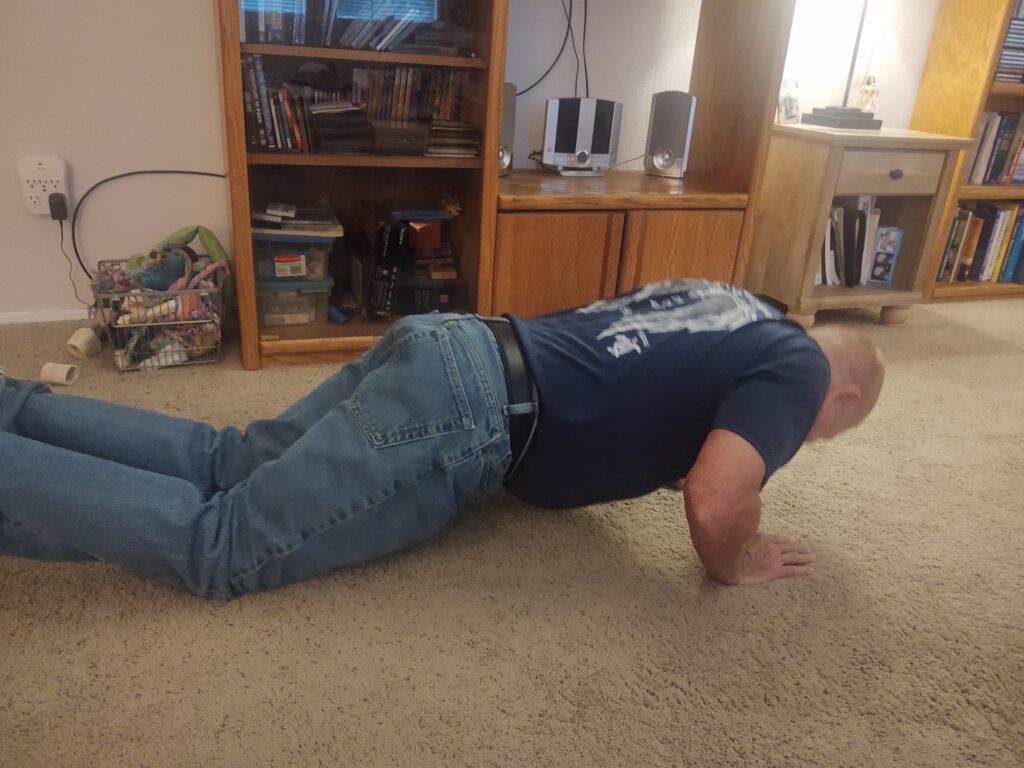
Hip Lifters (Bridges): Lie on your back with knees bent and feet flat on the floor. With hands on your abdomen raise you hips off the floor as high as possible and hold for the count of 10. Lower then repeat 6 to 9 times. This exercise strengthens the glutes which stabilizes your core, pelvis and lower body.

Doggies/Bird Dog: This exercise is done on hands and knees with hands in line with your shoulders and knees align with your hips. Lift one leg out to side keeping leg bent then back to the start position. Repeat 6 to 9 times. Switch legs and repeat. Switch legs. Keep your hips level. Do not rotate your pelvis. Avoid lifting your leg too high or allowing your spine to curve past its natural position. You should have a straight line from your fingertips to your toes. Engage your core to help keep your spine in a neutral position to avoid sagging. Be careful not to allow your chest to sink down toward the floor. Keep shoulder blades relaxed and in a neutral position. Keep your spine and neck in a line. Movements should be slow and controlled. Breathe smoothly with each movement. Repeat 6 to 9 times. Switch legs and repeat. This exercise works the muscles around the hips and aligns your spine and strengthens the core and pelvic muscles.
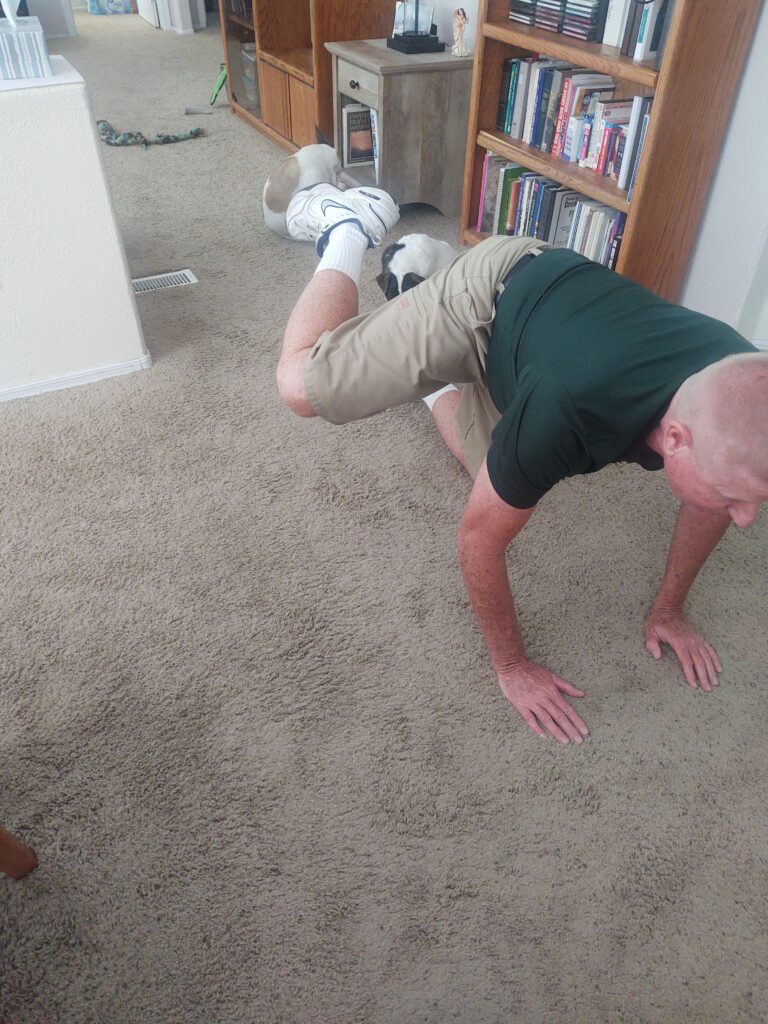
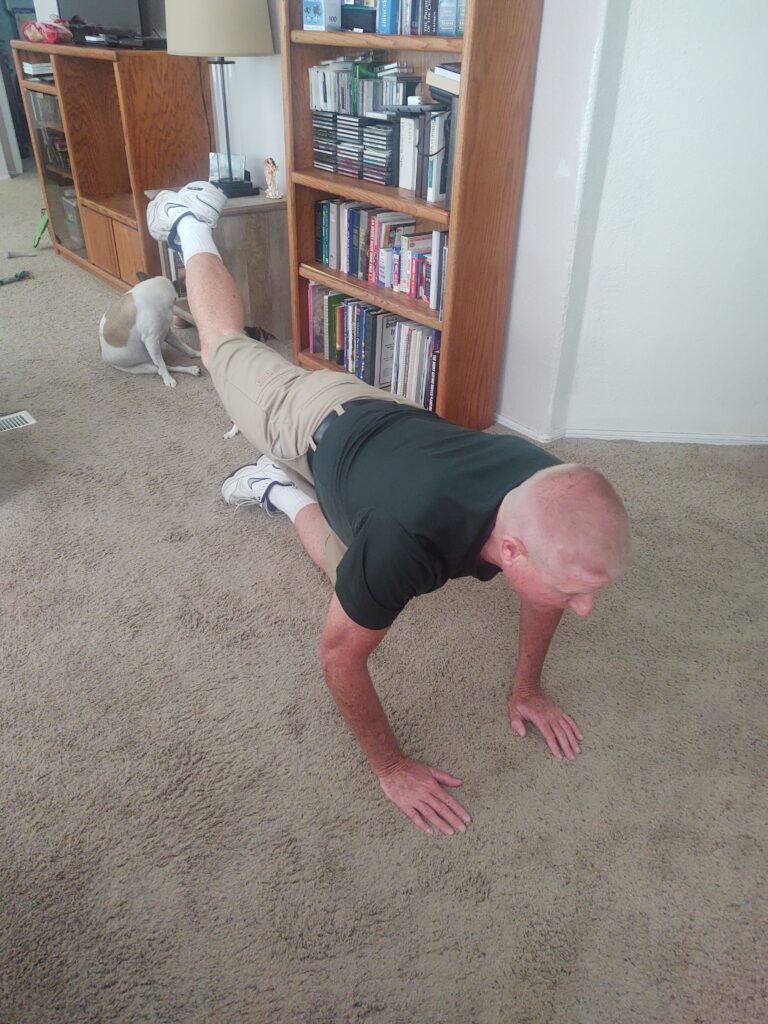
Ankle Stretch: This exercise is done in a standing position. Put your right foot back and bend your left knee while leaning forward keeping your back straight and head up. Keep the heel of your right foot on the floor. Hold to the count of 9. Relax and repeat 3 times. Switch feet and perform the same procedure on your left foot. This will help stretch the calf muscles and the Achilles tendon on one leg while working the upper leg, buttocks and abdomen.


While exercising always be aware of your breath. Breathe deeply and never hold your breath. Daily exercise is very important in order to maintain mobility and strength. As with any exercise, make adjustments as needed for your body and your needs.




